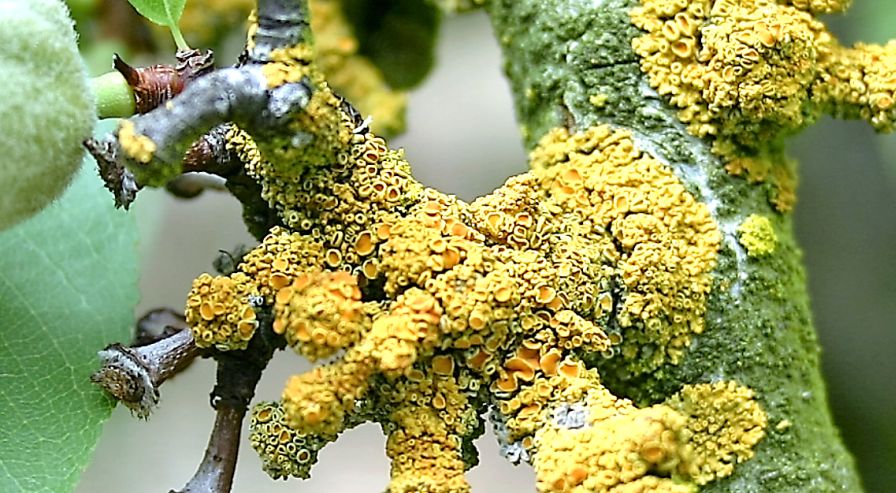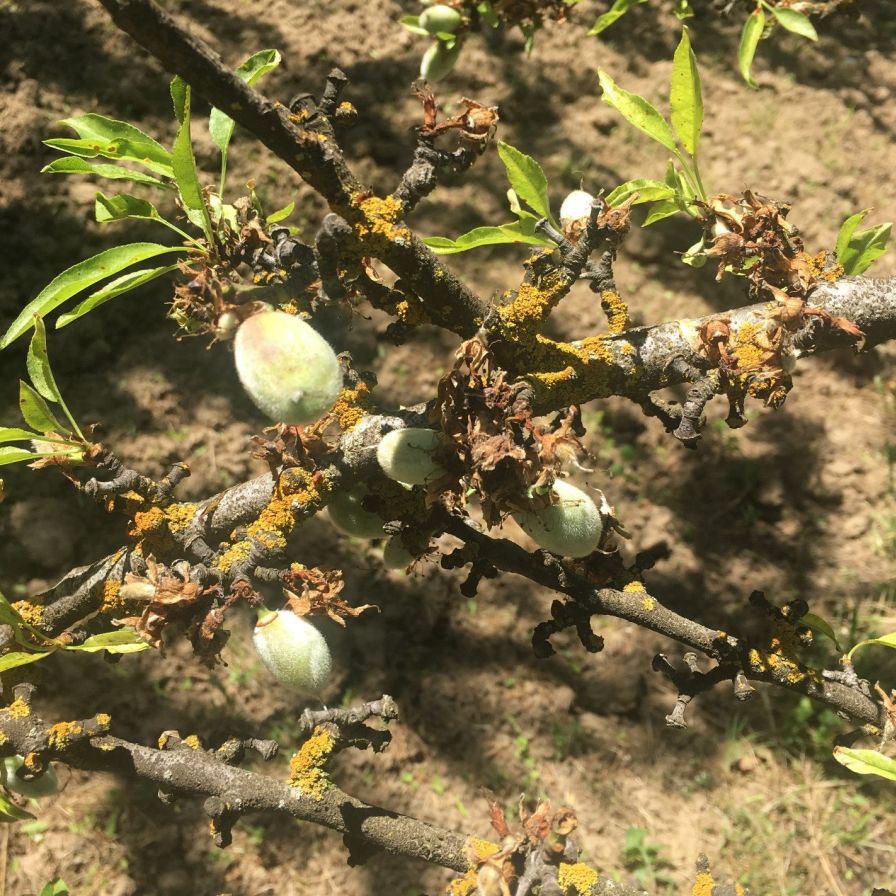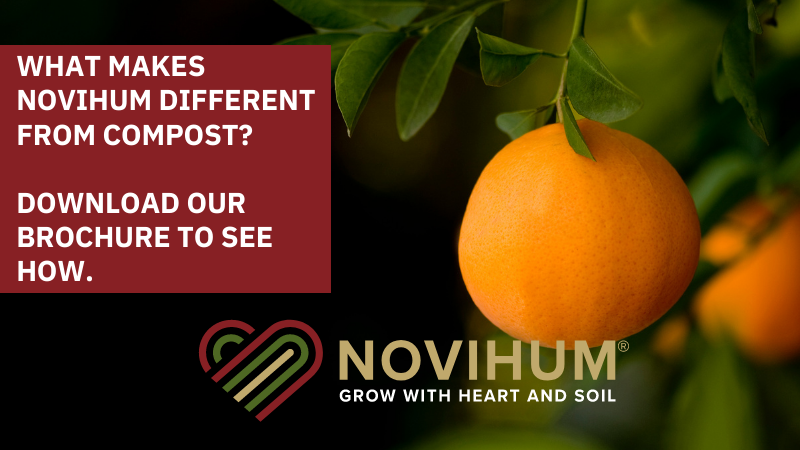Lichens Thrive in Your Orchard During a Wet Year

Lichen growing on an almond spur. (Photo credit: Wes Asai)
The above-average wet winter in California has created the perfect environment for a thriving population of lichen growth. The characteristic vibrant yellows and greens are evident in most mature orchards, and always brings up the question, “Are lichens harmful to trees?”
Lichens are often confused with moss, though the two are quite different. Moss is actually a primitive plant. It is non-vascular and reproduces by spores rather than by flowers and seeds. It is usually present in cool shady places with high moisture. Mosses make their food through photosynthesis.
Lichens are unique in that they represent a symbiotic relationship between a fungus and an algae. They are mutually dependent and the fungal portion cannot survive alone. The algae provides energy through photosynthesis, and the fungus obtains and provides water and mineral nutrients from the immediate surroundings.

Jacket rot is seen on lichen-infested spurs. (Photo credit: Wes Asai)
A Subtle Beginning
Initially, lichens can have a very subtle beginning and may be hardly noticed in an orchard. It may take on the appearance of a faint yellow cast on the rough portions of the bark of middle-aged trees. As the years progress, the growth thickens, and with each rain event in the spring, it swells to form impressive appendages, even to the naked eye.
Surely anything this spectacular must be doing something harmful to the tree, or is it?
Since neither the fungus nor the algae is known to be parasitic to the tree, it is believed that lichens are not harmful. While I would agree they are not directly harmful, I have observed secondary effects that lead me to believe there are negative effects to their presence.
The first thing I have noticed is that lichens can provide a haven for developing scale insects. I have removed lichens to find populations of San Jose scale underneath that are largely unparasitized. The structures appear to be shielding the scale from spray treatments or parasitic wasps.
Also, on densely blooming varieties that have compact fruiting spurs, lichens are both a source of high humidity and areas of entrapment for falling petals. These petals can become lodged in these spurs, and with the humid surroundings, provide the perfect environment for jacket rot organisms such as Botrytis and Sclerotinia. In wet springs these diseases can be a major contributor to reduced crop sets.
Control Strategies
If one chooses to attempt control of lichens, what are some strategies? The first consideration is that if the orchard in question is very old and inundated with lichens, control measures will generally be futile. Even with dormant treatments of liquid lime sulfur or copper, the impacts may appear significant immediately after treating, but once spring rains start, it will appear as if no treatments were applied.
The better approach if one prefers not to deal with severe lichen infestations is to do preventative maintenance starting at an early age. This is much more effective and can be achieved with occasional applications of dormant lime-sulfur or copper, and the use of zinc sprays, either as a foliar treatment or as a dormant application. When used preventatively, very low concentrations can have significant effects.
For the most part, growers incorporate zinc nutritional sprays in their programs, so this already is of benefit. If this is not sufficient, additional treatments of more tenacious materials such as zinc oxide or basic zinc sulfate can be used, even though their efficacy as a nutritional supplement is reduced due to their relative insolubility. Growers who use zinc sulfate monohydrate to burn leaves off in the fall for disease management will also gain some benefit.
So, are lichens harming your trees? This should be determined on a case by case basis. If it appears that scale insects or bloom diseases are not being effectively managed, even with the best control measures, it may be worth considering.










